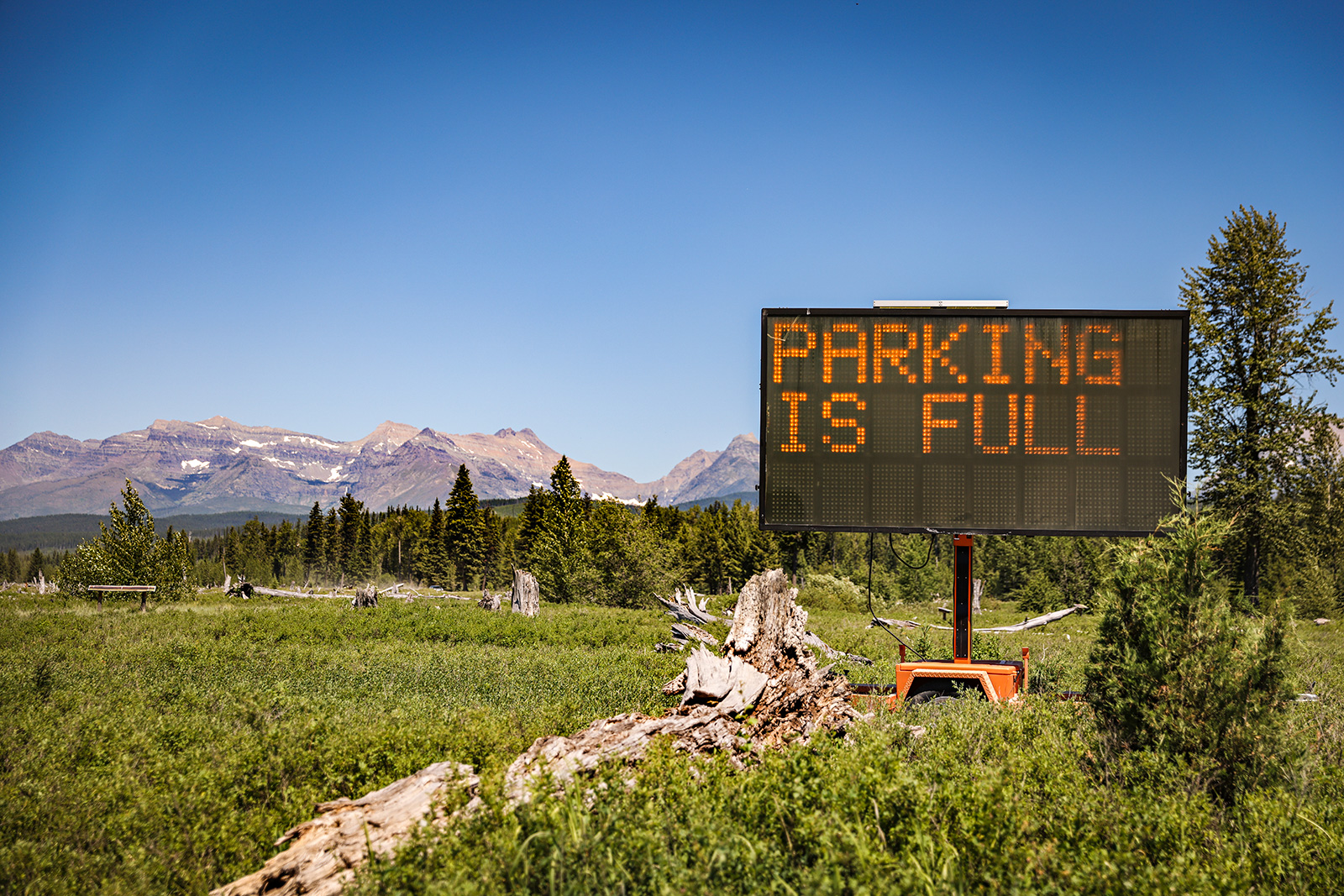
Off the Grid and Overrun
Glacier National Park’s ticketed entry system is driving hordes of ill-equipped visitors up the North Fork, a rugged and remote segment of the park where self-reliance was once a prerequisite
It’s not quite 9 a.m. and North Fork District Ranger Jim Dahlstrom has heard the names “Bowman” and “Kintla” lakes mispronounced so many times he’s stopped correcting people, turning his attention instead to the more pressing business of parsing visitors — sizing them up and winnowing the self-reliant from the totally helpless.
On the index of neophyte national park day-tripper, a garbled place-name pronunciation is a strong indication of greenhorn status, but, from a public safety standpoint, it’s far from the most serious red flag that Dahlstrom will encounter today.
“Is this road going to be rough because I’ve never changed a flat tire?” inquires one newly minted North Fork sightseer wondering whether to pilot her rented KIA deeper into Glacier National Park’s wild interior, and to whom Dahlstrom is exceedingly helpful and polite but nevertheless ranks in the back half of the “helpless” category, knowing that some poor member of his overworked skeleton crew may well be plucked from their duties in a few hours and dispatched up the wash-boarded gravel road to drag the woman, her KIA and its flatted 4-ply tires back to civilization.
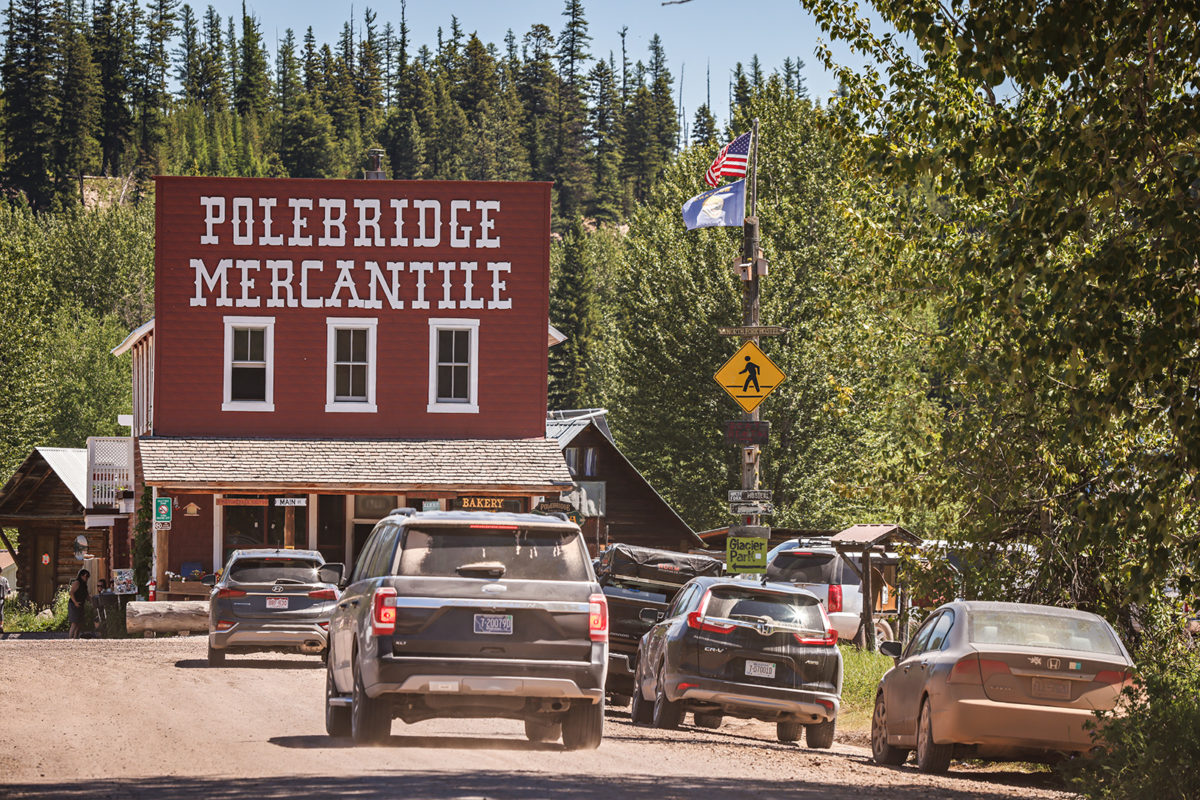
In this case, “civilization” has a liberal application, denoting the unincorporated and off-the-grid community of Polebridge, a remote outpost located just outside the entrance to Glacier’s northwestern quadrant, girded by the North Fork Flathead River to the west, the Continental Divide to the east, British Columbia to the north, and Camas Creek to the south. About one-third of the entire North Fork Valley lies in Glacier National Park, while the headwaters and the northern third of the valley are crown lands located in British Columbia. The remaining third is a combination of Flathead National Forest, state and private land.
According to the 1992 management plan for the North Fork, which was crafted as a blueprint to address visitor use and development needs in the region for the ensuing 10 to 20 years, the segment of the park accessed via Polebridge is identified as a “wilderness threshold zone” — an area serving visitors eager to leave the beaten path — and recommends that “actions be taken to preserve its character.”
“Important values contributing to experiences in this wilderness threshold are solitude, a sense of history, difficulty of access, and limited support facilities at the edge of the actual wilderness area,” the plan states, noting that visitor surveys conducted in the North Fork area in 1982 and 1986 revealed that people generally chose to visit the area because of the scenic beauty and solitude.
“In short,” the plan states, “most people felt that the opportunities in the North Fork area are unique because they are in contrast to the experiences offered in developed and heavily used areas of the park.”
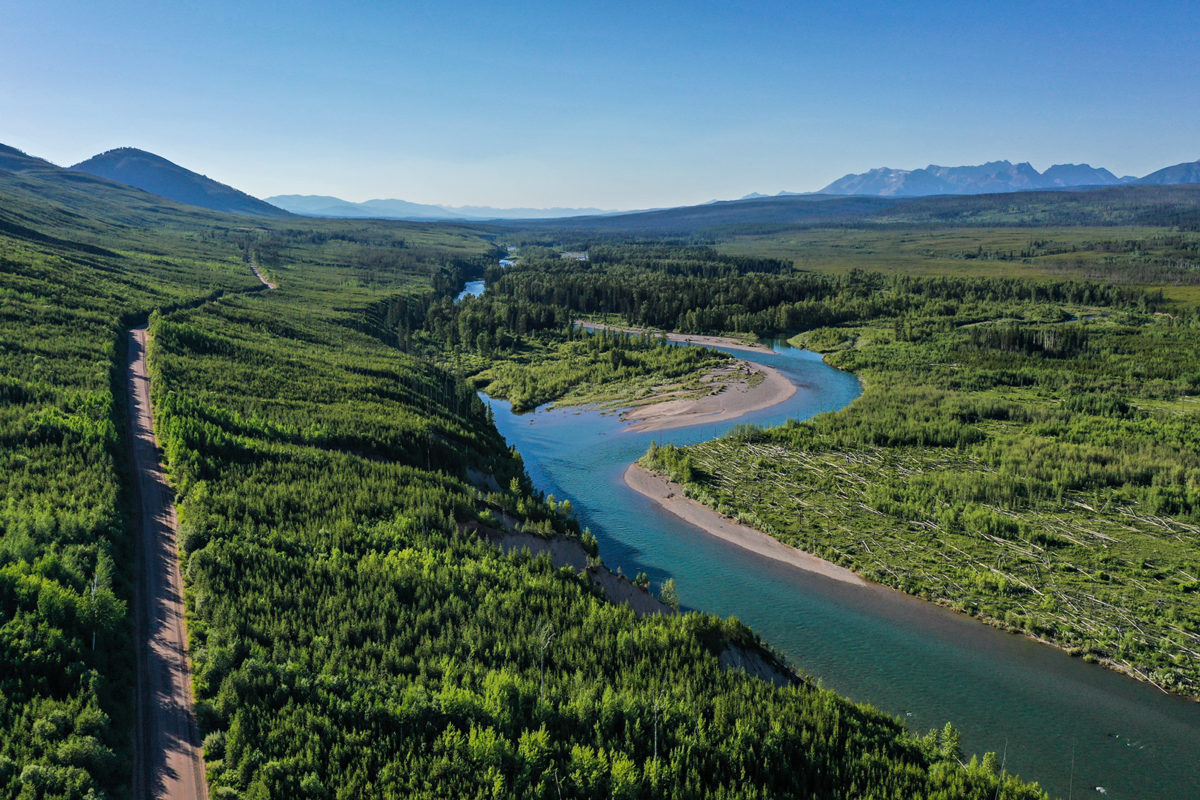
For one thing, it takes at least an hour to reach Polebridge from the nearest main highways, towns, or park headquarters, furnishing the North Fork with a degree of remoteness that once served as a natural deterrent to the uninitiated, “keeping the riff raff at bay,” as one year-round resident recently put it.
That isn’t the case anymore, and, in the last five years in particular, the pressure of increased visitation and its attendant consequences have come to bear in earnest on the region, which has neither the infrastructure nor the resources to accommodate the transformation.
On the last day of June, with the sun beating down on a motorcade of rental cars entering Polebridge, Dahlstrom estimated based on his interactions that an unsettling share of the crowd couldn’t point to where they are on a map, signaling a dramatic departure from the strain of visitor that’s historically been drawn to the North Fork, and marking a turn in management style that the ranger worries could become the new normal.
“In the past, we’ve managed this district as a primitive and remote section of the park, a place that’s attractive for its scenic beauty and solitude,” Dahlstrom says. “We’ve appealed more to the self-reliant visitor who appreciates that we’re difficult to access and offer few services. The visitors here had a sense of the North Fork’s history, of how unique it is. We’re not seeing that as much anymore. We’re seeing the displaced visitor who just wants to drive to the lake, take a picture for Instagram and leave.”
In 2021, the “displaced visitor” is someone who’s been guided here by their device, having divined the North Fork’s mere existence a few hours earlier, and then only after being turned away at the park’s more popular entrances in West Glacier and St. Mary, which reported a 41% increase in the number of vehicles entering the Sun Road on this year’s opening day as compared to 2019. Still, the park managed to avoid the type of gridlock, congestion and closures that have become so problematic in recent years.
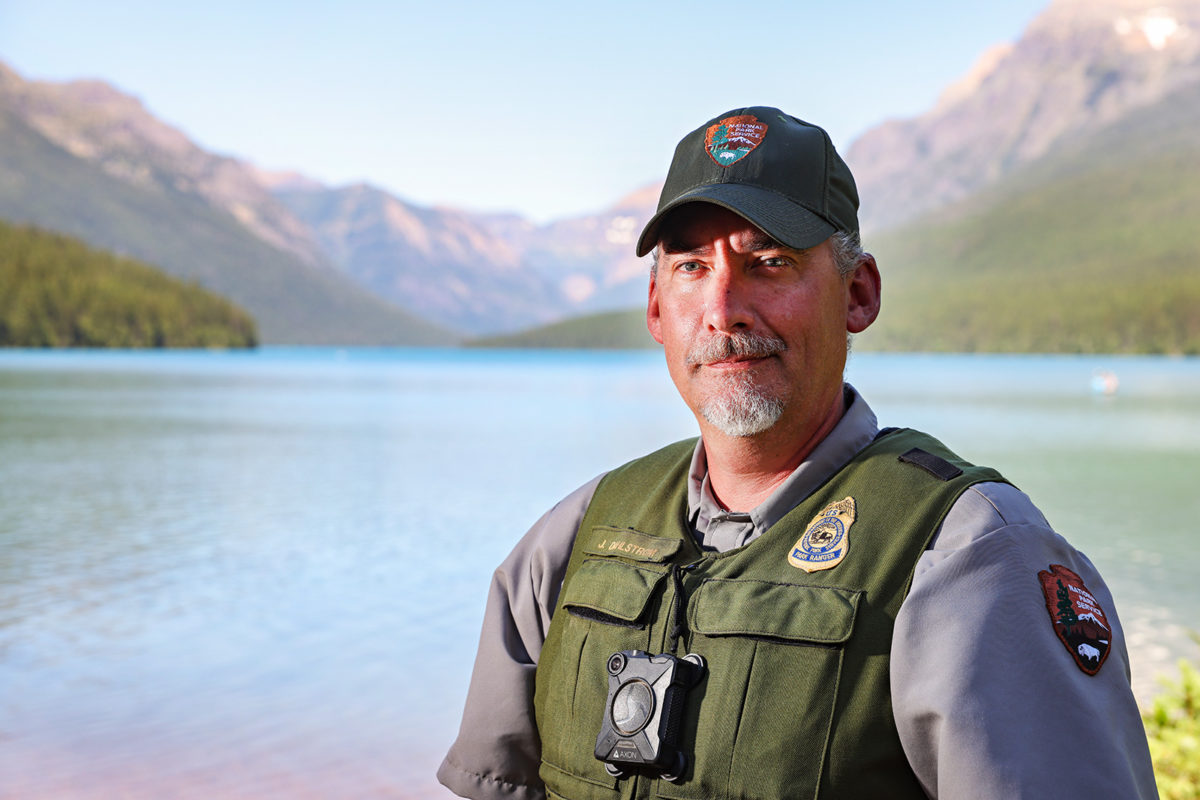
“What we’re seeing is that the visitors are strung out over a longer period of time, which helps us avoid those spikes,” Glacier Spokesperson Gina Kerzman explained, estimating that without the ticketed entry system in place, park officials would have had to close the west entrance 15 times since Memorial Day based on visitor-use patterns. “So in the Sun Road corridor, the ticketed-entry system appears to be working as intended to reduce congestion while maximizing capacity.”
Meanwhile, locals up the North Fork are growing begrudgingly accustomed to the region’s surging popularity, and have become irritatingly familiar with an oft-used analogy that likens visitation at Glacier National Park to a big balloon — pinch it in any one area and it bulges out in another. Last year, that balloon got pinched at the park’s east entrances, which were closed through a joint decision between the park’s top brass and the Blackfeet Nation, a reservation community that abuts the eastern edge of Glacier, and whose vulnerability to COVID-19 spurred a more restrictive response.
This year, the pinch is occurring due to Glacier Park’s new ticketed entry system, which, since May 28, has required visitors purchase an advanced reservation online in order to enter the popular Going-to-the-Sun Road corridor at its two access points in West Glacier and St. Mary, between the hours of 6 a.m. and 5 p.m. Visitors who turn up without the requisite ticket are turned away in frustration, and head toward the entrances where a ticket isn’t required, including Polebridge.
“For a lot of our visitors this summer, Polebridge is an afterthought,” Dahlstrom said. “It’s their Plan B. And Polebridge was never intended for the spontaneous visitor. You need to have a plan. If you start your day in West Glacier, get shut out and end up here as your alternative, you’re probably not going to get in. And you’re a lot less likely to enjoy the experience. It’s really hard to salvage your day at that point.”

Indeed, by the time most visitors hit the dusty turnoff leading to Polebridge, they’ve traveled nearly 40 miles along an unpaved road. If they’re lucky, they’ve arrived early enough that the roads providing access to majestic Bowman and Kintla lakes and the towering peaks of the Livingston Range haven’t yet been closed. But that requires arriving by 9 a.m.
“We’ve closed the road to Bowman Lake every day since Memorial Day,” Dahlstrom said. “We try to manage for one-in, one-out as parking spots open up, but honestly after 10 a.m., pretty much without fail, we just can’t pack any more cars in here. I don’t want to ruin anyone’s trip, and we hate saying ‘no’ — it truly is soul crushing for our staff. But you have to understand that we can only accommodate 120 parked cars in the entire North Fork district, with an additional maybe 30 to 40 cars driving the road system at a given time, and we’re getting 400 vehicles through here by 2 p.m. By the middle of the day, we’re turning away 50% of our visitors.”
The challenges of turning away so many visitors isn’t merely due to the limited infrastructure and the difficulty of managing two-way traffic, but also the off-the-grid nature of Polebridge, where the lack of cell service renders smart phones obsolete and leaves technology-reliant visitors helpless, putting the onus on Dahlstrom and the other rangers, who devote an outsized portion of their limited time to answering the most rudimentary questions. Last year, after Dahlsrom realized that scores of visitors were arriving in Polebridge because their devices were sending them here in search of the Going-to-the-Sun Road, he emailed Apple to explain the situation, pleading with the company to tweak or reset its algorithms.
“We had an inordinate amount of people who arrived at Polebridge just not knowing where they were at all,” Dahlstrom said. “They were looking for the Going-to-the-Sun Road or some other part of the park, and the GPS on their phone led them up here. I was able to get Apple to remove Polebridge from its Going-to-the-Sun Road search database on its mapping devices. So that was a small victory there.”
Moments later, in a scene that might have been scripted as testament to Dahlstrom’s point, a man driving an RV with Oregon license plates stops to ask whether the road to Bowman Lake leads to the Going-to-the-Sun Road, the park’s famed alpine byway located 50 miles from here, and whether he can make it in his 30-foot Coachmen. The short answer is “no,” but Dahlstrom, a patient man with an obliging demeanor, spends 10 minutes explaining that vehicles over 21-feet in length are prohibited on the long and winding road to Bowman Lake, and that the only way to access the Sun Road is to turn around and drive back the way he came.
The man is grateful for the information and, after executing a six-point turn in the dusty parking lot outside the Polebridge Mercantile, he’s on his way, only to return 10 minutes later to clarify Dahlstrom’s instructions.

Until recently, the entrance station at Polebridge consistently ranked among the least-visited areas, requiring a degree of resolve to access that not all park visitors possess.
In 2010, about 25,000 visitors entered Glacier through Polebridge, where a small but growing community of year-round residents lives. Last year, visitation quadrupled that number, despite the constraints of the pandemic, and this year is on pace to blow all historic records out of the water.
In 2017, the busiest year ever recorded in Glacier National Park, and the year that Dahlstrom started as district ranger, he counted about 7,000 cars entering the park at Polebridge during the month of June. On the morning of June 30, 2021, with a full day’s crush of visitors yet to be counted, he’d tallied 8,300 cars for the month.
“We have already smashed our June record. Absolutely smashed it,” Dahlstrom said. “We surpassed our daily record for any month six times already. We’re just in survival mode.”
Although Dahlstom noted there’s been a slight downturn in visitation since the full length of the Going-to-the-Sun Road opened on June 25, he wagered it would pick back up with a vengeance over the Fourth of July holiday weekend.

In an effort to control the numbers of vehicles entering the park entrance at Polebridge, Dahlstrom recently installed a portable 10-foot-by-6-foot solar-powered message board along the roadway, similar to what motorists might encounter entering a construction zone or a DUI checkpoint. Each morning when the parking area fills at Bowman Lake — by far the most popular and easily accessible destination in the North Fork — Dahlstrom flicks on the bank of LED lights, informing readers that “PARKING IS FULL” and “ROUGH ROAD AHEAD,” the garish orange block lettering cast in stark contrast against an azul sky, framed by the peak-studded ridgeline of the Livingston Range.
On the morning of June 30, he hits the switch at 9:50 a.m., and within minutes motorists are pulling over to ask Dahlstom, “Is the road really closed?”
“We have a great staff, and we will do everything we can to accommodate our visitors,” Dahlstrom said. “If we turn the sign on, and then get a senior citizen couple who just wants to drive to Bowman Lake, take a picture and leave, we’ll get them in. But the North Fork isn’t designed for the 1-2 hour visit. It’s an all-day adventure.”
“The infrastructure up here was never meant to accommodate this many people,” he adds. “If June is any indication of what the rest of the summer is going to be like, it’s going to be bleak.”
At the Polebridge Mercantile, owner Will Hammerquist accommodates the overflow of visitors with aplomb, capping the number of customers allowed inside the historic building at a given time in order to maintain a degree of authenticity to their experience. Hammerquist has worked in concert with the park to accommodate visitors strung out between the park’s entrance and the North Fork Road, expanding the offerings at his historic market and bakery from its famed huckleberry bear claws and sticky buns to a food truck and produce stand, as well as a volleyball court, picnic tables, and an interpretive nature trail describing the region’s history.
Although the steady increase in visitation to the North Fork has been good for business, Hammerquist acknowledges that the pressure it’s placing on the park’s limited staff and resources isn’t sustainable, and it’s eroding the quality of experience for the visiting public.
“Preserving the visitor experience is the number one priority, and the visitor experience up the North Fork is a primitive, remote experience,” Hammerquist said. “So if we’re going to put limits on the segment of the park that has the most infrastructure and offers the most services, we should probably consider putting limits on the segment of the park that has the least.”
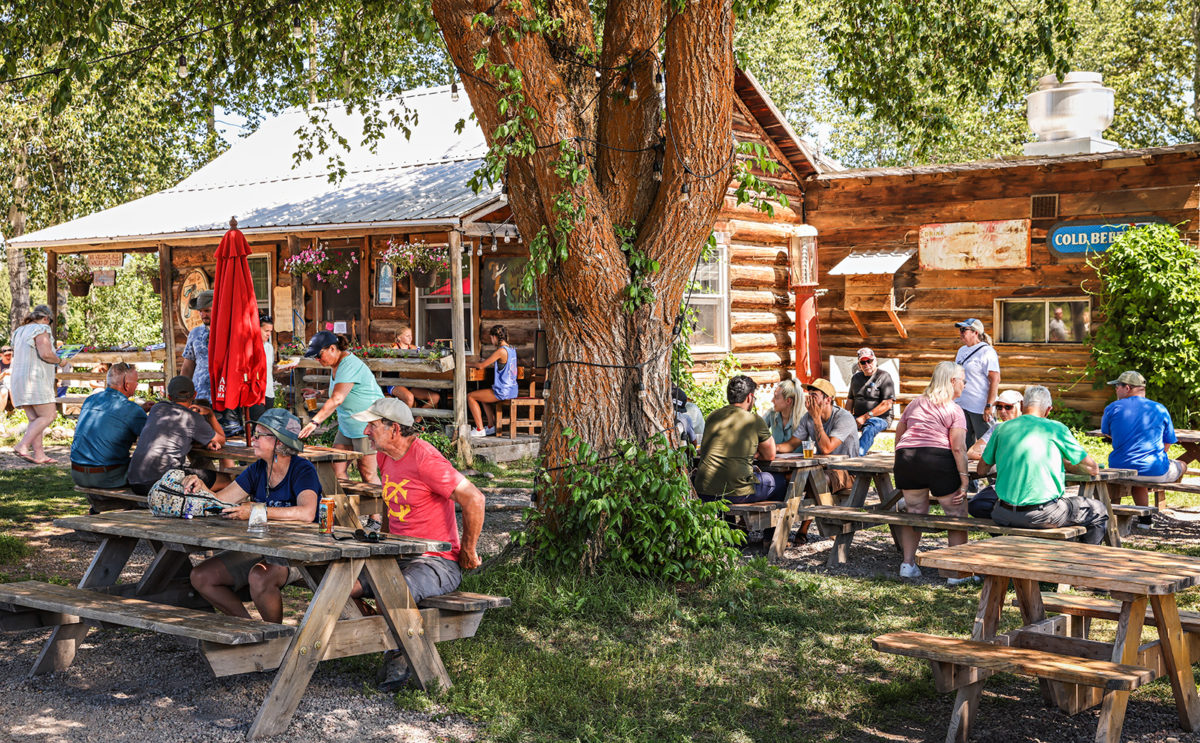
Indeed, two of the park’s entrances that don’t require a ticketed reservation in 2021 — Polebridge and Many Glacier — were among the areas first identified as potentially meriting restrictions, including a reservation pilot program. That was due in large part to the regularity with which park managers have had to close the entrances since 2017, the park’s busiest year on record, and the first time that more than 3 million people entered its gates.
It’s also the year that Glacier Park Superintendent Jeff Mow delegated greater autonomy to the park’s district managers, giving them carte blanche authority to execute closures whenever the entrances are overrun. Moreover, the 1992 plan, now nearly 30 years old, describes potential management actions for reducing “unacceptable road encounters and site conditions,” as well as trigger points that could be established to initiate a reservation system or other visitation quotas for the North Fork area. When the 1992 was replaced by Glacier Park’s 1999 General Management Plan, the visitation quotas were omitted, and the official version states “the North Fork area will be preserved to maintain the primitive character of this transboundary watershed … Visitor services will be rustic and will preserve a national park quality and style of development that has become increasingly rare. Management actions will preserve that primitive character.”
For some, including Dahlstrom, preserving that primitive character is a challenge that will continue to mount without more stringent management actions in place, including a reservation system.
“The management plan says to consider reservations once visitors start encountering more than five other cars on their drive between here and Bowman Lake,” Dahlstrom said. “Well, we’re more than five times above that marker. I don’t know how much longer we can sustain this, so if we continue the ticketed-entry model on the Sun Road I think we have to consider it for the North Fork and Many Glacier and Two Medicine. Because they’re feeling it too.”
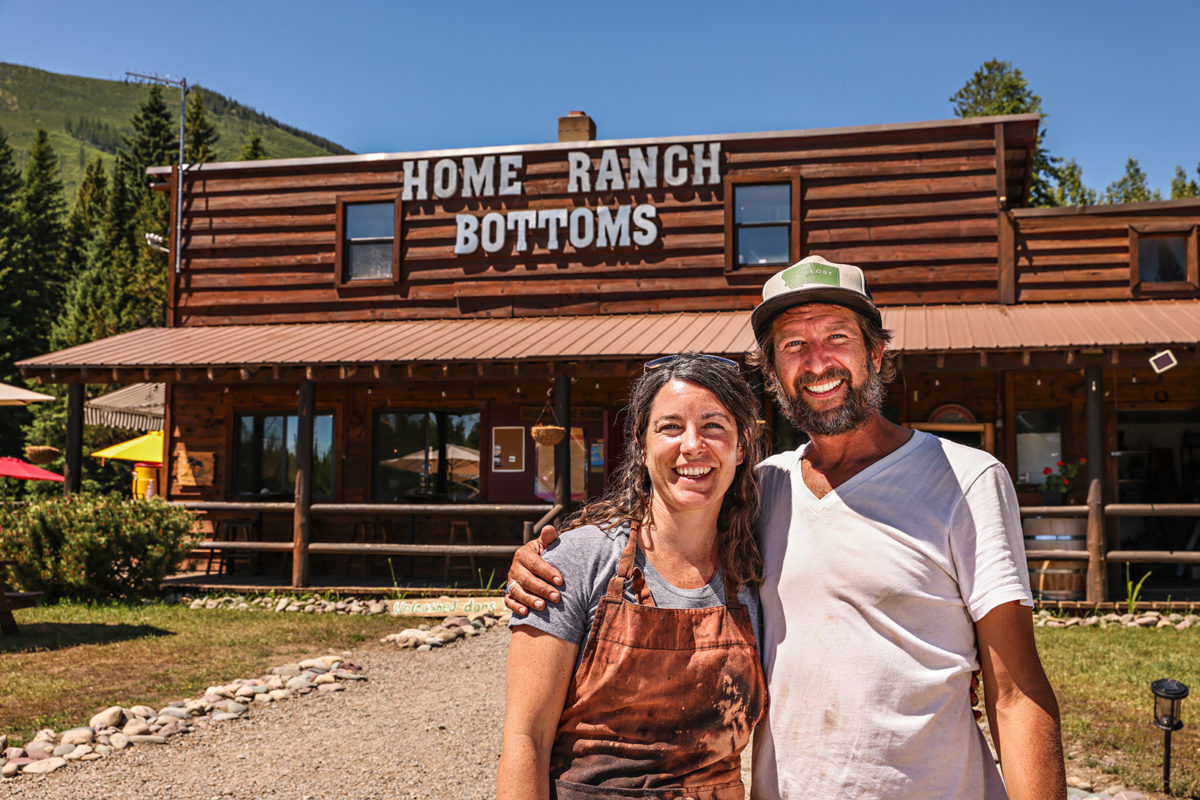
Three miles south of Polebridge, Flannery Coats and Daniel Freund recently purchased the bar and restaurant at Home Ranch Bottoms, where they cater to customers in search of a slightly more relaxed vibe before entering the fray at Polebridge. But the couple has long ties to the North Fork, and Coats has spent the past few summers working the entrance station at Polebridge, witnessing the untenable surge in visitation in real time.
“I am much happier serving people pie and margaritas than having to tell them no all of the time,” Coats said.
Despite having to tell them ‘no,’ Dahlstrom said the majority of visitors are grateful and pleasant, and said although tempers flare daily, it’s limited to one or two visitors.
“The lion’s share of our visitors are kind and composed, even if they are disappointed,” Dahlstrom said.
Just then, a family approached the uniformed ranger and asked him to confirm whether the road to Bowman Lake was indeed closed, a point that he confirmed, explaining that if they returned in the evening it would probably re-open.
“That’s OK,” said Amy Carlson, who was visiting from Reno, Nevada. “I just came here to get a bear claw anyway.”